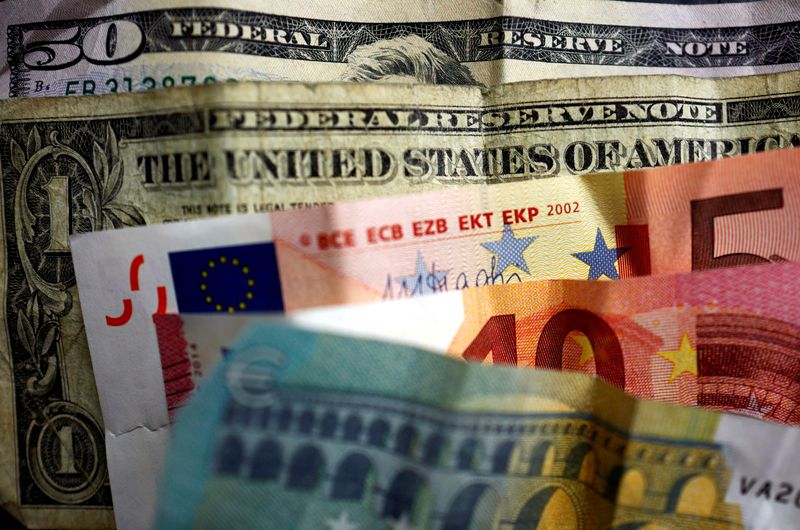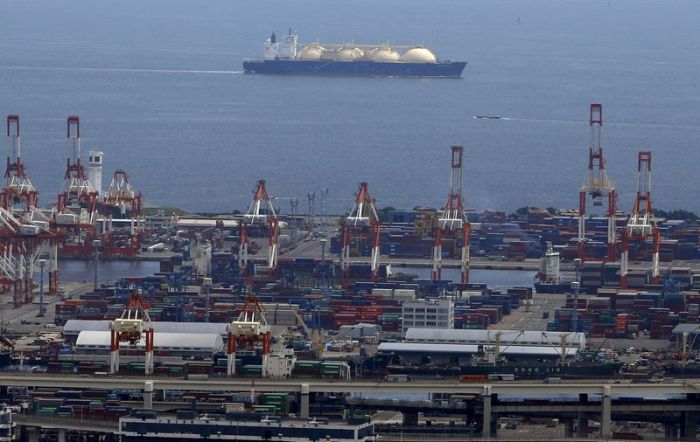NEW YORK/LONDON (Reuters) – The U.S. dollar reversed almost all of its earlier gains while the euro found itself on a steadier footing on Monday as oil prices retreated from highs reached as the United States and Europe considered banning Russian crude.
The dollar index was last up less than 0.1% at 98.94 in morning trading in New York having climbed as much as 0.6% overnight when the euro plunged on concern that higher energy prices will spark stagflation and hammer the European economy as it tries to recover from the pandemic.
The euro was last off 0.4% against the dollar at $1.089 after dropping as much as 1% earlier and 3% over three days.
“The forex market is taking its cues from oil,” said Joe Manimbo, senior market analyst at Western Union Business Solutions.
Brent crude fell back from a high of $139.13 and was last up around 2% at $120.30 a barrel. The spike came as the U.S. and European allies considered banning Russian oil imports and on reports of delays in talks with Iran about replacement supplies. [MKTS/GLOB]
After the Russia-Ukraine war began euro/dollar volatility gauges climbed to their highest levels since March 2020.
On Monday the euro held above $1.08, with its about turn at $1.0806 potentially noteworthy for coming days, Manimbo said.
“Maybe the market will be careful about pushing it further downward ahead of the European Central Bank meeting on Thursday.”
The ECB will wait until the last months of the year to raise rates, according to economists polled by Reuters poll.
After flirting with parity to the Swiss franc earlier on Monday, the euro traded up 0.6% at 1.0079 francs. It was also up slightly versus the yen.
Against the dollar, a volatile British pound was last down 0.5% at $1.3157.
The Aussie, which tends to trade with commodity prices, was down 0.3% against the dollar, more than reversing all of an earlier 1% rise.
The conflict in Ukraine and harsh international sanctions on Moscow have sent Russian assets tumbling, while prices of the country’s exports such as precious metals, oil and gas have soared at a time when the global economy was already grappling with inflationary pressures.
Europe is the most vulnerable as it imports as much as 40% of its natural gas from Russia and the single currency has become increasingly correlated with oil prices – the higher oil climbs, the more the euro falls.
“The euro continues to absorb the most pressure of major currencies on the fallout from the war in Ukraine,” said John Hardy, head of FX strategy at Saxo Bank.
According to Goldman Sachs, a sustained $20 oil rise shock would lower real economic growth in the euro area by 0.6% and by 0.3% in the United States. But in a more adverse scenario if Russian gas shipments via Ukraine were curtailed, then euro area GDP could fall by as much as 1% from gas alone.
========================================================
Currency bid prices at 10:06AM (1506 GMT)
Description RIC Last U.S. Close Pct Change YTD Pct High Bid Low Bid
Previous Change
Session
Dollar index
98.9400 98.8940 +0.06% 3.426% +99.4150 +98.6640
Euro/Dollar
$1.0890 $1.0933 -0.39% -4.21% +$1.0967 +$1.0806
Dollar/Yen
115.3250 114.6550 +0.59% +0.19% +115.3500 +114.7700
Euro/Yen
125.58 125.49 +0.07% -3.63% +125.9400 +124.4000
Dollar/Swiss
0.9256 0.9163 +1.02% +1.47% +0.9259 +0.9192
Sterling/Dollar
$1.3157 $1.3227 -0.51% -2.70% +$1.3265 +$1.3141
Dollar/Canadian
1.2758 1.2725 +0.25% +0.90% +1.2766 +1.2686
Aussie/Dollar
$0.7351 $0.7372 -0.27% +1.13% +$0.7441 +$0.7347
Euro/Swiss
1.0080 1.0021 +0.59% -2.79% +1.0097 +0.9973
Euro/Sterling
0.8277 0.8254 +0.28% -1.46% +0.8284 +0.8204
NZ
Dollar/Dollar $0.6845 $0.6861 -0.20% +0.04% +$0.6925 +$0.6840
Dollar/Norway
9.0225 8.9365 +0.90% +2.35% +9.0505 +8.9585
Euro/Norway
9.8300 9.7893 +0.42% -1.83% +9.8608 +9.7218
Dollar/Sweden
9.9485 9.8646 +0.63% +10.32% +10.0691 +9.8662
Euro/Sweden
10.8352 10.7677 +0.63% +5.87% +10.9048 +10.7707
(Reporting by David Henry in New York and Saikat Chatterjee in London; Editing by Kirsten Donovan)

























